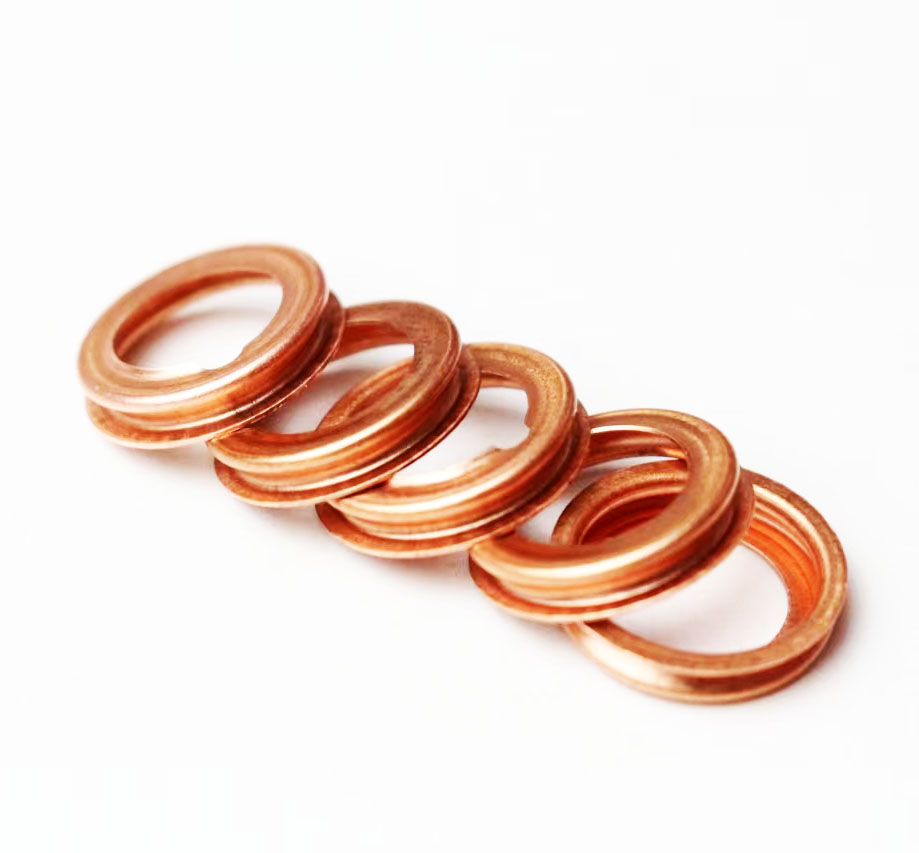o ring gasket seal
Understanding O-Ring Gasket Seals A Comprehensive Overview
O-rings are versatile sealing devices widely used in various applications, from household items to complex industrial machinery. Their simplicity in design and effectiveness in sealing make them integral components in many systems. In this article, we will explore the significance of O-ring gasket seals, their design, materials, applications, and best practices for ensuring optimal performance.
What is an O-Ring?
An O-ring is a circular sealing element, typically made from elastomeric materials, with a cross-section that resembles the letter 'O.' This simple shape allows the O-ring to create a tight seal between two surfaces, preventing the escape of fluids or gases. When compressed between mating surfaces, the O-ring distorts slightly, filling any gaps and creating a barrier that is crucial for maintaining pressure in systems.
Materials Used in O-Rings
The performance of an O-ring gasket seal largely depends on the material from which it is made. Common materials include
1. Nitrile Rubber (NBR) Known for its good resistance to oils and fuels, NBR is often used in environments where exposure to petroleum products is common.
2. Fluoroelastomer (FKM) This material offers exceptional resistance to high temperatures and harsh chemicals, making it suitable for aerospace and automotive applications.
4. Polyurethane With excellent abrasion resistance and flexibility, polyurethane O-rings are effective in dynamic sealing applications.
5. EPDM (Ethylene Propylene Diene Monomer) This material is used in applications where ozone, weather, and temperature resistance are key factors.
The choice of material depends on the specific requirements of the application, including temperature range, chemical compatibility, and pressure conditions.
o ring gasket seal

Applications of O-Ring Gasket Seals
O-ring seals are utilized in a wide range of industries, including aerospace, automotive, pharmaceutical, and food processing. Some common applications include
- Automotive Engines O-rings are used in oil pans, cylinder heads, and fuel systems to prevent leaks and maintain pressure. - Hydraulic Systems In hydraulic pumps and cylinders, O-rings ensure fluid containment and prevent contamination. - Aerospace O-rings play a critical role in various aircraft systems, providing reliable seals in extreme conditions. - Household Appliances Frequently found in faucets, dishwashers, and washing machines, O-rings help prevent leaks in everyday appliances.
Best Practices for O-Ring Installation
To ensure that O-rings perform their sealing function effectively, proper installation is crucial. Here are some best practices
1. Choose the Right Size O-rings come in various sizes and should be selected based on the specific groove dimensions and application requirements. An improperly sized O-ring can lead to leaks or system failures.
2. Inspect Before Installation Always check the O-ring for defects such as cuts, tears, or hardening before use. Damaged O-rings should be replaced to avoid potential failures.
3. Proper Lubrication Applying a compatible lubricant can help ease the installation process and reduce friction, minimizing the risk of damage during assembly. However, it is essential to use a lubricant that is compatible with the O-ring material.
4. Avoid Overstretching During installation, avoid stretching the O-ring excessively, as this can lead to deformation and a compromised seal.
5. Regular Maintenance Regular inspections and replacements can help prevent leaks and prolong the life of components that rely on O-ring seals.
Conclusion
O-ring gasket seals are essential in ensuring the reliability and efficiency of numerous mechanical systems. Their simple design belies the complexity of their application, while the range of materials available allows for tailored solutions to meet specific industrial challenges. By understanding their characteristics and following best practices for installation and maintenance, businesses can ensure that their systems remain leak-free and operational. O-rings may be small components, but their impact on performance is substantial, making them indispensable in modern engineering.
-
Understanding the Front Main Engine Seal: Purpose, Maintenance, and Installation
News Jul.29,2025
-
Understanding O-Rings and Seal Rings: Types, Applications, and Custom Solutions
News Jul.29,2025
-
Understanding Crankshaft Oil Seals: Rear Seals, Pulley Seals, and Their Role in Engine Integrity
News Jul.29,2025
-
The Importance of Front and Rear Crankshaft Seals in Engine Performance and Oil Management
News Jul.29,2025
-
Crank Oil Seals: Functions, Types, and Cost Considerations in Engine Maintenance
News Jul.29,2025
-
A Comprehensive Guide to O-Rings and Seals: Types, Materials, and Global Applications
News Jul.29,2025
-
Mastering Diesel and Performance Engine Maintenance: A Guide to Critical Oil Gaskets
News Jul.28,2025
Products categories















